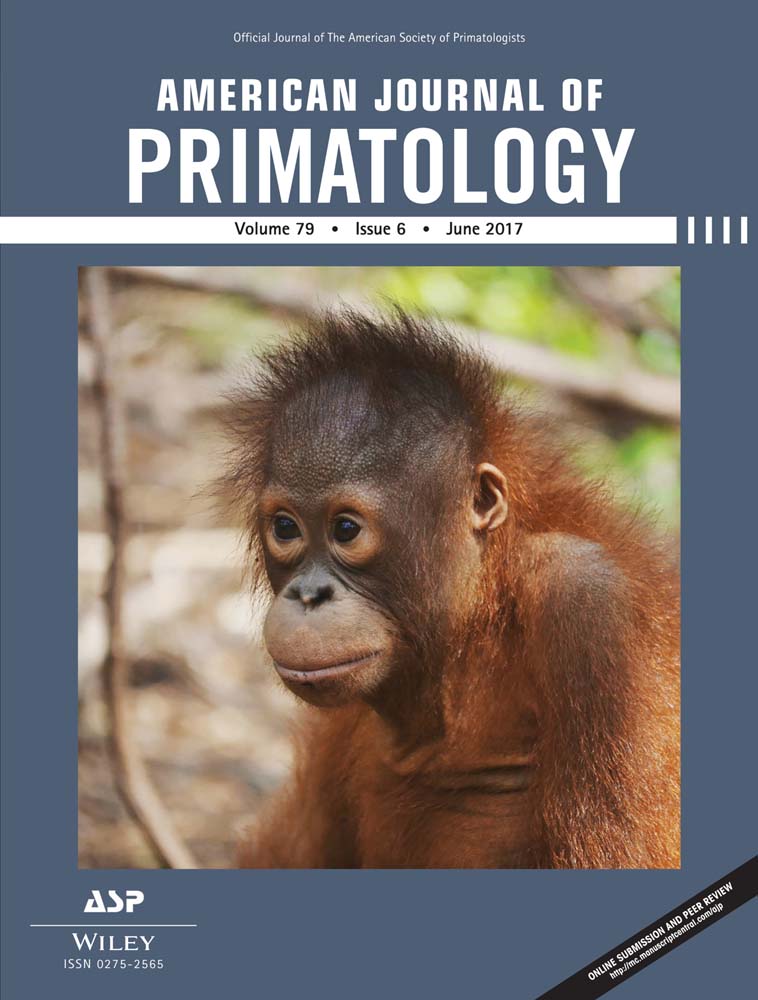Obituary Robert H. Horwich (1940–2017)
Dr. Robert H. Horwich, renowned primatologist, conservationist, and “the Father of community conservation” (Lavendel, 2000) passed away after a short illness on February 7, 2017, at Gundersen Hospital in La Crosse, Wisconsin. Rob was with friends at the time of his passing and is survived by his sister Janet Weinberg and his nieces Lisa and Emily, his community of friends in rural Wisconsin, and a global network of people and places he touched. Tireless until the end, he had just returned from Cameroon where he was helping a new conservation project for the cross river gorilla (Gorilla gorilla diehli). Rob always had a keen interest in animals and he devoted his life to their conservation. Although his high school guidance counselor told him he could never earn a Ph.D., he subsequently received a B.S. (1962) from Rutgers University and a M.S. (1964), and Ph.D. (1967) from the University of Maryland. His dissertation research focused on the social behavior of gray squirrels (Sciurus carolinensis). After completing his Ph.D. he conducted post-doctoral research with the Smithsonian Institute in India, directed the Maryland House Natural History Museum, and conducted further research on infant primate development at the Brookfield Zoo, and was visiting lecturer at several universities. He conducted research on primate behavior in India and Central America since 1967, and pioneered a reintroduction effort for black howler monkeys (Alouatta pigra) (Horwich, Koontz, Saqui, Saqui, & Glander, 1993). Rob was also key in developing reintroduction methods at the International Crane Foundation where he was resident ethologist. In 1984 he began work with community sanctuaries and established the Community Baboon Sanctuary in Belize. Following this in 1986 Rob founded and became first director of US NGO Community Conservation.
Rob lived simply and generously, especially after moving to rural Wisconsin in 1976. Even his rare extravagance was modest: adding an extra sugar packet to a cup of coffee or giving dollar bills to children for cakewalk fundraisers. Rob was also a keen artist; turning the shiny detritus of consumer society into bizarre, beautiful, irreverent sculptures that greeted visitors to his home. Rob's affinity for the unconventional allowed him to see solutions when others saw only problems. When Endangered cranes (Grus spp.) being raised in captivity were losing their wild instincts due to human contact, he pioneered the use of surrogate and artificial stimuli to avoid imprinting, and attachment to caregivers (Horwich, 1989). When dam construction on the Kickapoo River was abandoned and the repossessed land was being abused and argued over, he saw opportunity to create a community-managed nature reserve.
What Rob is probably best known for his accomplishments for conservation across the globe, and in particular his work with a wide diversity of primates, first in Belize, and then in places around the world. When local people were blamed for the loss of wildlife, Rob saw that informed and inspired communities have the power to conserve the beauty, and integrity of their homelands. While conducting research in Belize, Rob realized that the howler monkeys (A. pigra) he was studying were disappearing, so he refocused his efforts from academic investigation to applied conservation. He worked with local villagers to create the Community Baboon Sanctuary (Horwich & Lyon, 1993), which became an internationally renowned model for conservation. Later in his career, in India, Rob refined his profoundly effective method as he worked to conserve forests for the Critically Endangered golden langur (Trachypithecus geei). As a radical departure from conventional conservation wisdom at the time, Rob taught that for local people forests were special not only for their economic value and the services they offer but for their beauty and intrinsic, aesthetic and cultural importance (Allendorf et al., 2013). Rob's conservation technique was simple: he asked local people for their help conserving forests, later helping them to create community groups equipped for this mission (Horwich, Lyon, Bose, & Jones, 2012). This approach catalyzed interest and pride, and from a handful of villages in Belize Rob's work spread to encompass over 200 communities across the globe. Rob's approach was always local in scale, combining many small projects to effect large-scale change. At the time of his death Rob had projects in 15 countries on five continents, in 2 UNESCO Biosphere reserves (Manas, India and Gran Pajaten, Peru) protected 1.5 million acres of habitat for numerous threatened primate species including Geoffroy's black and white colobus (Colobus vellerosus), the Rolaway monkey (Cercopithecus rolaway), the Mexican spider monkey (Ateles geoffroyi vellerosus), ring-tailed lemur (Lemur catta), the yellow tailed woolly monkey (Lagothrix flavicauda), and the San Martin titi monkey (Plecturocebus oenanthe) among countless others.
As Rob consistently sought to catalyze rather than maintain influence his legacy lives on, with many of the projects he helped to form continuing without him. He authored nearly 100 scientific articles, book chapters and books, was featured in and helped to produce a number of films, and served on various boards and committees. Rob will be missed for his gentle and friendly spirit, for his delightfully odd sense of humor, and for his quiet, fierce love of the natural world.




